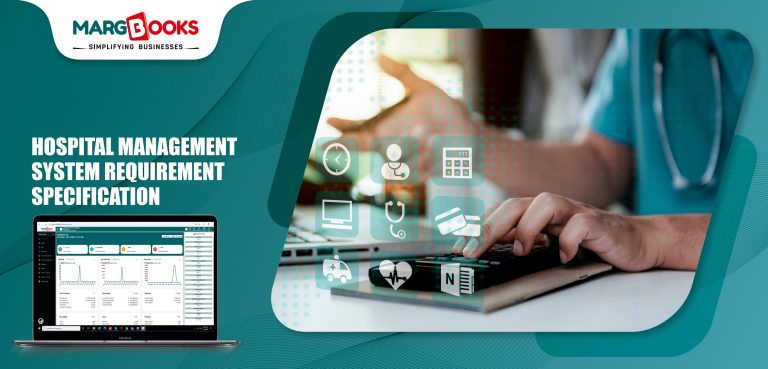Preparing a complete Hospital Management System (HMS) Requirement Specification involves creating a comprehensive and detailed document that clearly defines the system’s functionalities, features, constraints, and technical specifications. The goal is to ensure that the stakeholders (including developers, designers, project managers, and the hospital management) are aligned on the system’s goals and the features it must include.
Here is a step-by-step guide to preparing an HMS Requirement Specification:
1. Introduction
- Purpose: Define the objective of the HMS (e.g., to automate and streamline the hospital’s administrative and clinical processes).
- Scope: Explain the scope of the HMS, including what it will and will not do. This could include areas like patient management, billing, appointment scheduling, medical record management, etc.
- Definitions, Acronyms, and Abbreviations: List and define any technical terms, acronyms, and abbreviations used in the document.
- Intended Audience: Specify who the intended readers of the specification are (hospital administrators, software developers, healthcare staff, etc.).
- System Overview: Provide a high-level description of the system and its core features.
2. Stakeholders
- Identify and list all stakeholders who are involved in the system’s design and implementation. For a hospital management system, stakeholders can include:
- Hospital administrators
- Doctors and medical staff
- IT staff
- Patients
- Vendors (for hardware, software, etc.)
- Regulatory bodies
- System users (nurses, lab technicians, billing personnel)
3. System Functional Requirements
This section should define the detailed functionality that the system should provide. Examples include:
- Patient Management:
- Patient registration (demographic data, insurance details, etc.)
- Patient admission/discharge
- Patient history tracking
- Record of medical conditions, allergies, and medications
- Appointment Scheduling:
- Appointment booking by patients or hospital staff
- View available time slots for doctors
- Notifications and reminders (SMS/email)
- Doctor and Staff Management:
- Doctor profile management (specialty, availability, qualifications)
- Staff scheduling (shifts, leave requests, etc.)
- Role-based access control
- Billing and Payment:
- Patient billing (for consultations, procedures, medications, etc.)
- Insurance claim management
- Payment processing (integration with external systems like banks or payment gateways)
- Medical Records and Reporting:
- Patient medical history (diagnoses, treatments, prescriptions)
- Test results and reports (lab tests, imaging)
- Prescription management
- Electronic Health Record (EHR) integration (if applicable)
- Generate reports (e.g., patient reports, revenue reports, inventory reports)
- Inventory and Pharmacy Management:
- Medicine and supplies inventory management
- Reordering supplies
- Stock tracking and expiry dates
- Integration with pharmacy for dispensing medications
- Laboratory Management:
- Integration with laboratory systems
- Test result logging and reporting
- Requesting and tracking lab tests
- Emergency and Critical Care:
- Emergency room management
- Critical care patient monitoring
- Patient Portal:
- Online access to health records and appointments for patients
- Medical history and lab results review
- Payment and billing status check
- Security and Compliance:
- Data encryption
- User authentication and role-based access control
- Compliance with healthcare standards (e.g., HIPAA, GDPR)
- Audit trails and logs for patient records and user actions
4. Non-Functional Requirements
These requirements define how the system performs its functions:
- Performance: Expected system speed, response time, and handling capacity (e.g., number of simultaneous users, database transactions per second).
- Availability: Expected system uptime (e.g., 99.9% uptime).
- Scalability: Ability to grow with the hospital’s needs (e.g., adding new departments, hospitals, or regions).
- Usability: Ease of use, including UI/UX requirements.
- Security: User authentication, data encryption, and protection of patient data.
- Backup and Disaster Recovery: Backup frequency and recovery process in case of system failure.
- Compliance: Adherence to healthcare regulations (e.g., HIPAA, local laws regarding health data privacy).
- Interoperability: Ability to integrate with other hospital systems (e.g., EHR, laboratory systems).
5. System Architecture and Design
Provide a high-level description of the system’s architecture:
- System Modules: Break down the system into modules (e.g., patient management, billing, appointment scheduling, etc.).
- Technological Stack: Outline the technologies that will be used to build the system (e.g., database type, programming languages, server infrastructure).
- Data Flow Diagrams (DFDs): Visual representations of how data moves through the system.
- Entity-Relationship Diagrams (ERD): Define relationships between the different data entities (patients, doctors, appointments, bills, etc.).
6. User Interface Requirements
- Describe the user interface requirements, including:
- Main screens (patient registration, doctor schedules, billing details, etc.)
- User roles (admin, doctor, nurse, patient)
- UI components (forms, buttons, drop-downs, etc.)
- Wireframes or mockups (if available).
7. System Integration Requirements
- External System Integrations:
- Integration with hospital management software (if any)
- Integration with third-party systems (payment gateways, insurance providers, etc.)
- Data exchange standards (e.g., HL7, FHIR for healthcare data)
8. Data Management and Reporting
- Data Types and Formats: Describe the types of data to be stored (e.g., personal information, medical records, billing data).
- Reporting Requirements: Define what reports are required by users (e.g., revenue reports, patient care quality reports, etc.).
- Data Backup and Archiving: Describe how data is backed up and archived over time.
9. System Constraints
- Hardware Requirements: Specify server hardware, user devices (e.g., desktop, tablet, mobile), and network requirements.
- Software Requirements: List the software requirements (e.g., operating systems, database management systems, libraries, etc.).
- Regulatory Constraints: Define legal or regulatory constraints the system must adhere to.
10. Assumptions and Dependencies
- Any assumptions that may impact the system design or functionality.
- Dependencies on other systems, technologies, or external factors.
11. Glossary
- Define any terms used in the document that may require clarification.
12. Appendices
- Include any additional information that may be relevant, such as detailed wireframes, diagrams, or external references.
Tips for Creating an Effective Specification:
- Clear and Precise: Use clear and concise language.
- Collaborative: Involve key stakeholders in the specification creation process to gather their inputs and ensure alignment.
- Use Case Scenarios: Include real-world use case scenarios to illustrate how the system should work.
- Prioritize Features: Prioritize the most important features (e.g., patient care-related functionalities) and differentiate between “must-have” and “nice-to-have” features.
Conclusion
MargBooks is a cloud-based pharmacy and business management software designed for retailers, wholesalers, and distributors, offering real-time access, automation, and compliance with GST regulations. Creating a thorough requirement specification helps reduce ambiguities, manages expectations, and sets a clear direction for the development of the Hospital Management System.




